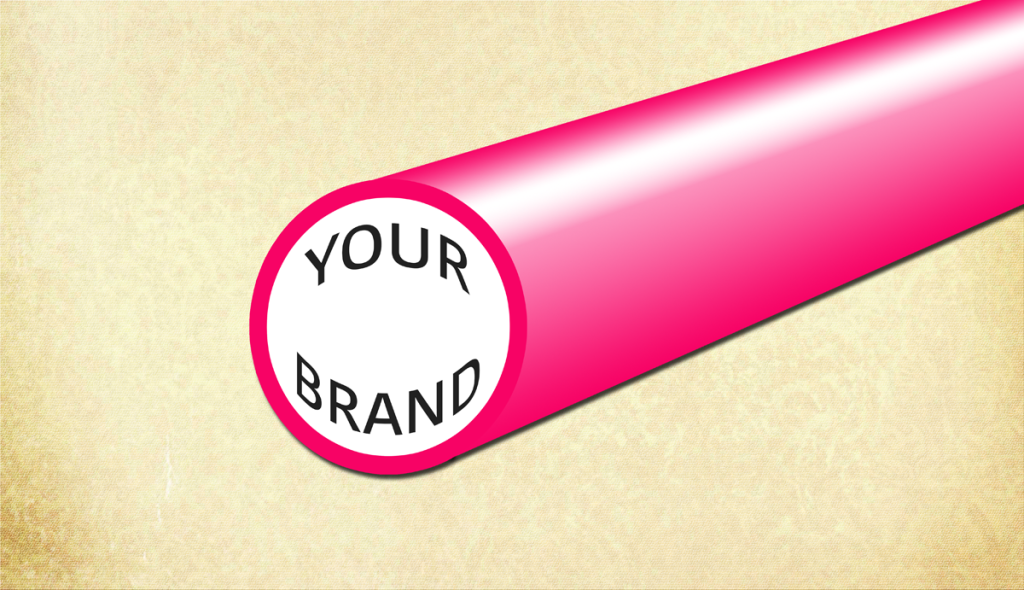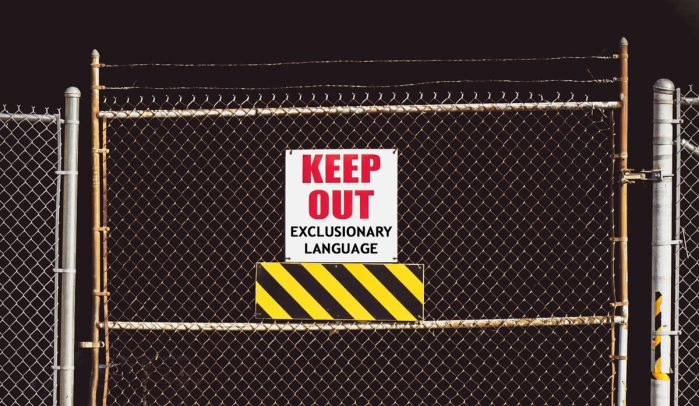UPDATED APRIL 4, 2025
Language barriers keep people out
Before we start, this is not a post about foreign language barriers. It’s a post about brands creating language barriers that exclude, alienate and disengage the very people they’re supposed to be talking to: their target audience and ideal customers.
Language barriers like these make your ideal customers feel like you don’t understand them. And they give the impression you’re not the best brand to help them solve their problems.
You need to put your audience first
If you want your customer communications to be effective, you should create them for your audience.
This means addressing your ideal customers directly. It means writing in a way that’s clear, engaging and easy for them to understand. And it means focusing on their problems and their needs.
When brands don’t put their audience’s needs first, they sometimes create exclusionary language barriers that are stop their ideal customers from engaging with them.
5 Language barriers to be aware of
Here are five exclusionary language barriers that could be keeping your ideal customers away.
1. Insider language
You probably use some industry terms and abbreviations in your business. You’re familiar with them. You know what they mean. Your colleagues know what they mean. But what about your customers?
If your terminology is likely to be unfamiliar to your audience, you need to explain what it means. And ditto any abbreviations.
Some of the most common abbreviations are called initialisms and acronyms. They’re handy because they shorten much longer phrases. But if your audience doesn’t know what they mean, they’ll create a communication barrier.
What is an initialism?
An initialism is an abbreviation formed using the first letters of each word in a sequence.
For example:
- DfT —> Department for Transport
- FAQ —> Frequently Asked Question
- HMRC —> His Majesty’s Revenue & Customs
- HSE —> Health and Safety Executive.
What is an acronym?
An acronym is an initialism where the abbreviated initials make a readable word.
For example:
- BOGOF — Buy One, Get One Free
- DEFRA —> Department for Environment, Food & Rural Affairs
- PIN —> Personal Identification Number
- FOMO —> Fear Of Missing Out.
Why are these abbreviations a problem?
Imagine trying to read something and constantly having to break off to look up abbreviations you’ve never heard of before.
Does that sound like fun?
Didn’t think so.
But this is what your reader has to do when you use unexplained abbreviations in your copy.
And every time your readers have to break away from reading your copy, you risk losing them altogether. Because they might just give up and not bother coming back.
How to use abbreviations
Initialisms and acronyms save you typing out the full names of things. And they’re easier to read, once your audience understands them.
To avoid creating a barrier, write them out fully the first time you use them with the abbreviation in brackets at the end. Like this: Health and Safety Executive (HSE). From that point you can just use HSE, because you will have told your audience what it means.
2. Highfalutin language
Highfalutin. What a great word. For some reason, it reminds me of cowboys and American westerns. But it actually means pompous, posh and showy.
Language like this can make you sound arrogant, snobbish and aloof.
Take this AI-written copy, for example, which uses highfalutin language to advertise a simple can of tomato soup:
“Gather, gastronomic enthusiasts! Prepare to embark upon a culinary odyssey like no other, as we present to you a can of tomato soup that transcends the ordinary, defying the conventions of flavour and sophistication.
Within its confines lies a symphony of vibrant tomatoes, meticulously simmered to perfection, harmonising with aromatic herbs and savoury spices, dancing upon your palate with every spoonful.”

Needless to say, the people who would buy this can of tomato soup don’t talk like that!
Some brands think big words and highfalutin language make them sound more impressive and professional. But, if it doesn’t connect with their audience, it’s never going to work for them.
What’s the problem with highfalutin language?
When brands use highfalutin language, at least one of these things usually happens:
- They end up sounding pretentious and fake
- They make mistakes and use words incorrectly because this language doesn’t come naturally to them
- They don’t get their message across because they’re more concerned with how it sounds than what it says
- Their ideal customers don’t feel seen or understood, because the brand isn’t speaking their language
- The target audience doesn’t feel any connection to, or affinity with, the brand.
You need to speak your audience’s language
When you communicate with your ideal customers, you need to use language that feels familiar and comfortable to them. This is the language they use themselves.
In copywriting circles, we call this voice of customer. We use it to make a better connection with the people we’re talking to, so they feel seen and understood.
3. Off-brand language
Every brand should have its own language and message. A consistent, recognisable voice that aligns with what it’s selling, who it’s selling to and what it stands for.
If your brand is using language that doesn’t align, this will leave your ideal customers confused and thinking maybe you’re not the brand for them after all.
For example:
- You run a back street café, but your copy sounds like a high end restaurant
- Your market is teens and young adults, but your copy is talking to children
- You run a discount shop, but your copy talks about ‘quality’ and ‘excellence’
- Your brand is focused on sustainability but you don’t practise what you preach.
Why should your language align with your brand?
Your brand should have its own language and message. And this should run through all your communications, like the lettering through this stick of seaside rock.

Your messaging helps your audience feel an affinity with your brand. It creates a sense of familiarity and makes them feel comfortable — like they know you.
How to write about your brand more successfully
To write a strong brand message, using on-brand language, you need to be clear on your brand’s:
- Target market
- Reason for being
- Values and culture
- Personality
- Promise to your customers.
These things should be at the heart of everything you write.
4. Corporate language
Every business wants to sound professional. But some businesses equate sounding professional with sounding corporate — and they’re not the same thing.
Rather than being engaging and interesting, corporate language sounds stuffy and boring. It’s often more company focused than customer focused and it uses formal language that would be more at home on a solicitor’s letter.
Take this much-too-corporate toothbrush ad, for example:
We’re delighted to present to you, the ToothPro 7: a new standard in the field of oral care. With its precision-engineered bristle arrangement and ergonomically considered handle, it’s designed to deliver an effective and comfortable cleaning experience.

What’s the problem with sounding corporate?
Some communications need corporate language — like business contracts and legal letters, for example.
But for sales copy and blog content it’s too stiff, matter-of-fact and emotionless. And it’s not something people would choose to read.
How to sound professional
When you’re writing copy and content — and you want people to read it — you need to intrigue, inspire and engage them. Corporate-sounding copy just won’t do that.
Communicating professionally is about more than just the words and language you use. It’s about knowing and understanding your audience and using language that’s appropriate for them. With that in mind, it’s worth remembering that the average reading age in the UK is 9.
5. Vague language
Vague language is hard to pin down because it never really commits to anything.
It’s full of maybes, mights, cans and coulds. And it’s sketchy on the details, speaking generally rather than specifically.
Like this piece of content on staycations, which doesn’t really tell us anything:
Some research studies have shown slight increases in the numbers of people enjoying staycations, but this is more or less the same as last year, perhaps because of cost or perhaps because of convenience. Staycations could be more popular in the years to come as some people might prefer to stay in the UK.
What’s the problem with vague language?
Vague language doesn’t sound confident or credible and there’s nothing persuasive or convincing about it. Using language like this makes you sound weak, indecisive and unreliable.
With this language it’s your audience putting up the barriers, because you don’t seem trustworthy and that puts them on their guard.
How to write more confidently and authoritatively
There are a number of ways to write more confidently and authoritatively. Starting with being specific, precise and explicit in the way you convey information.
You can read more about how to do that in my separate article:
Writing with authority and confidence >>
In conclusion
These are all extreme examples, but they all come back to the same thing: your audience. Before you write anything, you should know:
- Who you’re writing it for
- What they already understand
- What they need to understand
- How they communicate.
And you should be clear on your brand and what it should mean to your ideal customers.
Do you need more audience-friendly copy or content?
If you’re struggling to write copy that connects with your audience, chances are you’re too close to it. You need someone who can look at it objectively and tell you where you’re going wrong.
I’m Jenny Lucas, a freelance copywriter and content writer based in Leicester, UK.
I specialise in creating engaging copy and content that’s written specially for your target audience and is designed to generate more leads and new business.
Want to find out more? Visit my main website for more information about my services or get in touch.

You might also like…



